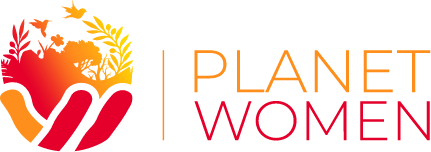Stories of a Changing Colorado River, Shared from the Sky
Goosenecks State Park. © Bob Wick.
From thousands of feet in the air the roaring Colorado River looks like a small, silver ribbon stretching across the curve of the Earth. If you’re in an airplane, the river’s vast impact is laid bare: a millennia of rock sanded into deep, twisting canyons; a lush green lifeline feeding tributaries, farms and towns across the Desert Southwest.
Another truth of the river becomes clear from this height: The Colorado is one of the most engineered river systems in the world. Aqueducts, pipelines, dams, reservoirs, all serve to redirect the river’s flow for the 40 million people that rely on it for drinking water, farming, electricity and more. At this point, the Colorado never even reaches its natural delta at the Sea of Cortez in Mexico. You can read these words and understand them, but seeing these truths from the sky offers a whole new appreciation for the importance of the Colorado River and the scope of the problem the river basin is facing.
Climate Change has pushed the Colorado to the Brink
The monumental lifeline that is the Colorado River has sustained cultures and wildlife for millions of years — yet now it’s drying up. A 2020 USGS study estimates that the river could lose 14–30% of its flows by 2050 due to climate change. This would be devastating for nature and people.
The Babbitt Center for Land and Water Policy calls the Colorado the “hardest working river in the West,” since it supports energy, irrigation and drinking water for 40 million people. Seven U.S. states, 29 Native Tribes and Mexico receive allocations. Yet every year, the demand for water exceeds the river’s capacity. And the past 20 years of megadrought conditions have imperiled the system. Climate change has created a situation in the Colorado River Basin that climate scientist Brad Udall calls, “aridification,” the transition to an increasingly water scarce environment. Put simply: Drought is temporary. Aridification is permanent.
The basin is already suffering under climate change and progress isn’t being made fast enough. To save this important river and the vibrant communities that depend on it, a holistic approach and more diverse voices are needed. Planet Women is investing in three critical program areas to protect nature and support communities in the Colorado River Basin:
Increasing women’s leadership and Indigenous leadership in water management,
Improving freshwater access and investing in habitat restoration, and
Sharing the stories of the basin and its Native Peoples through the Colorado River Overflight Project.
You might be surprised to see that alongside our investments in habitat restoration and diverse leadership, we’ve launched a storytelling project. But guess what? Art and creative storytelling are powerful forces for change! And the Colorado River Basin is home to a rich diversity of Native cultures that hold deep ancestral knowledge of the Colorado River and its wildlife.
The Colorado River Overflight Project
Planet Women’s CEO Kristine Zeigler is both a pilot and a creative writer, so she was inspired to launch a project that combines these passions and elevates the voices of Indigenous communities: The Colorado River Overflight Project. This project brings together Indigenous women leaders and youth from across the Colorado River Basin to share traditional knowledge and valuable stories about the river inspired by the vantage point of a bird’s eye view.
Planet Women is conducting the first women-led overflight of the entire Colorado River from the Rocky Mountains to the Gulf of California.
All the pilots are women and all the passengers are Native women or Native youth. Flight paths are designed to fly passengers over places that are of personal importance to their lives and heritage — certain stretches of the river, specific lakes or forests, family homes or sacred spaces. We hope that seeing these places from the sky sparks inspiration and joy.
In tandem with the flights, we are building a digital storytelling platform to share the stories, videos, and creative pieces inspired by the river, including footage and interviews captured before, during and after the flights. In the summer, we will host creative workshops to bring together participants to share stories and make art collectively, with the intention of bridging communities across the vast basin. The artists will guide what the final product looks and sounds like, but our aim is to host an exhibit that can be shared publicly to inspire anyone with a connection to the Colorado River.
Our First Flight!
On September 5th, 2021, our first flight soared out of Durango. Pilot Cassie Burgess took Lorelei Cloud, a councilmember for the Southern Ute Tribe and leader for the Water and Tribes Initiative, along with high school senior Lexy Young, over Navajo Lake, the Piedra River and the Lemon Reservoir. Since then, we’ve had seven more flights take off and we have three more planned — if the pandemic allows.
Pictured: Southern Ute Tribal Councilor Lorelei Cloud, volunteer pilot Cassie Burgess, and high school senior Lexy Young (Southern Ute).
Our hope is that this project will inspire participants — passengers and pilots — by offering them an opportunity to see their river from a new perspective and connect with other women who value the Colorado River. And we hope that whatever stories and art arise will plant seeds of change in the hearts of the public. We believe that amplifying the voices of Indigenous women and girls will broaden the impact of environmental efforts in the Colorado River Basin and in communities around the world.
And if you’re wondering, what about the habitat restoration work and leadership efforts? Don’t worry, we’ll share more in a follow up blog post or you can read our 2021 annual report.
Learn more about Planet Women’s Colorado River Overflight Project here. Get updates on how Planet Women is protecting nature, supporting communities, and transforming the culture of conservation by subscribing to our newsletter.


